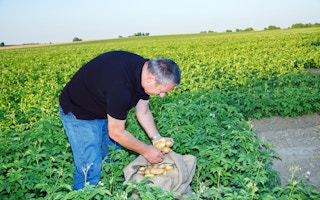STANFORD – Organic products – from food to skin-care nostrums to cigarettes – are very much in vogue, with the global market for organic food alone now reportedly exceeding $60 billion annually. The views of organic devotees seem to be shared by the European Commission, whose official view of organic farming and foods is, “Good for nature, good for you.” But there is no persuasive evidence of either.
A 2012 meta-analysis of data from 240 studies concluded that organic fruits and vegetables were, on average, no more nutritious than their cheaper conventional counterparts; nor were they less likely to be contaminated by pathogenic bacteria like E. coli or salmonella – a finding that surprised even the researchers. “When we began this project,” said Dena Bravata, one of the researchers, “we thought that there would likely be some findings that would support the superiority of organics over conventional food.”
Many people purchase organic foods in order to avoid exposure to harmful levels of pesticides. But that is a poor rationale. While non-organic fruits and vegetables had more pesticide residue, the levels in more than 99 per cent of cases did not cross the conservative safety thresholds set by regulators.
Moreover, the vast majority of the pesticidal substances found on produce occur “naturally” in people’s diets, through organic and conventional foods. The biochemist Bruce Ames and his colleagues have found that “99.99 per cent (by weight) of the pesticides in the American diet are chemicals that plants produce to defend themselves. Only 52 natural pesticides have been tested in high-dose animal cancer tests, and about half (27) are rodent carcinogens; these 27 are shown to be present in many common foods.”
The bottom line is that natural chemicals are just as likely as synthetic versions to test positive in animal cancer studies, and “at the low doses of most human exposures, the comparative hazards of synthetic pesticide residues are insignificant.” In other words, consumers who buy expensive organic foods in order to avoid pesticide exposure are focusing their attention on 0.01% of the pesticides that they consume.
“
According to a recent British meta-analysis, ammonia emissions, nitrogen leaching, and nitrous-oxide emissions per unit of output were higher in organic systems than in conventional agriculture, as were land use and the potential for eutrophication – adverse ecosystem responses to the addition of fertilizers and wastes – and acidification
Ironically, in both Europe and North America, the designation “organic” is itself a synthetic bureaucratic construct – and it makes little sense. It prohibits the use of synthetic chemical pesticides, with some pragmatic exceptions. For example, the EU’s policy notes that “foreseen flexibility rules” can compensate for “local climatic, cultural, or structural differences.” When suitable alternatives are lacking, some (strictly enumerated) synthetic chemicals are allowed.
Similarly, in the US, there is a lengthy list of specific exceptions to the prohibitions. But most “natural” pesticides – as well as pathogen-laden animal excreta, for use as fertiliser – are permitted.
Another rationale for buying organic is that it is supposedly better for the natural environment. But the low yields of organic agriculture in real-world settings – typically 20-50% below yields from conventional agriculture – impose various stresses on farmland and increase water consumption substantially. According to a recent British meta-analysis, ammonia emissions, nitrogen leaching, and nitrous-oxide emissions per unit of output were higher in organic systems than in conventional agriculture, as were land use and the potential for eutrophication – adverse ecosystem responses to the addition of fertilisers and wastes – and acidification.
An anomaly of how “organic” is defined is that the designation does not actually focus on the food’s quality, composition, or safety. Rather, it comprises a set of acceptable practices and procedures that a farmer intends to use. For example, chemical pesticide or pollen from genetically engineered plants wafting from an adjacent field onto an organic crop does not affect the harvest’s status. EU rules are clear that food may be labeled as organic as long as “the ingredients containing [genetically modified organisms] entered the products unintentionally” and amount to less than 0.9% of their content.
Finally, many who are seduced by the romance of organic farming ignore its human consequences. American farmer Blake Hurst offers this reminder: “Weeds continue to grow, even in polycultures with holistic farming methods, and, without pesticides, hand weeding is the only way to protect a crop.” The backbreaking drudgery of hand weeding often falls to women and children.
Of course, organic products should be available for people who feel that they must have and can afford them. But the simple truth is that buying non-organic is far more cost-effective, more humane, and more environmentally responsible.
Henry I Miller, a physician and fellow in Scientific Philosophy and Public Policy at Stanford University’s Hoover Institution, was the founding director of the Office of Biotechnology at the US Food and Drug Administration. His most recent book is The Frankenfood Myth. This post originally appeared here.








